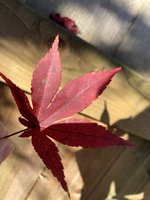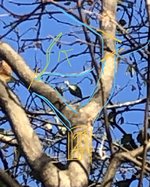I have heard that when doing an airlayer that it will layer better just under a branch split. Underneath a crotch. This usually ends up with a twin trunk, but doesn't have to. I usually try to keep just under a branch. It doesn't have to be a big one, but these mark where there are likely to be latent buds. I usually trim the small branch off to fit the pouch and sphagnum moss. The branch to be layered should be about 1". Much less or more could take more time or maybe not work at all. I've watched Peter Chan on YouTube take huge air layers, but it was palmatum species, so I can't vouch for cultivar vigor. Much smaller it might not have the sap movement to want to be successful. Besides any smaller and a cutting wouldn't make too much difference.
To answer the question asked. YES! Look for an area that the first chop will be made. So best case scenario is you find an area of interesting movement just past a place where there are buds. That section will be 1/3 the length of your finished tree in mind and on top of that bend is a fork. Once the layer is done you grow it out until it's 3/4 the final thickness and hard chop one branch another 1/3 height of finished tree. The other branch is a sacrifice and can be removed anytime after that. When pruning maples remember to leave a stub just out from the trunk for die back.
You never mentioned what the maple was actually. In any case you'll want to include the proportions in your vision. If it's a Bloodgood vs a small leaved dwarf the size will have to be adjusted accordingly.
One last thing...
The more vertical a brach is, the better the chance is for even rooting. I've had horizontal branches that only rooted on the bottom. It's OK, but then you may have to try to induce roots or even graft roots on to the side that didn't take after harvesting the layer. Lastly... When you prep the air layer the top cut doesn't have to be exactly straight, but should reflect the angle in which you want your roots to grow. If you cut at an angle the roots will follow and the the layer can be planted at that angle. It might need some support until it's established, but that's another trick rarely mentioned.


